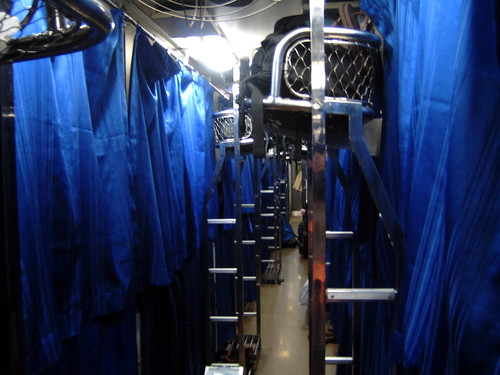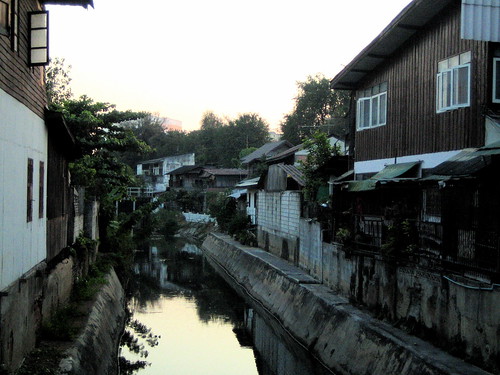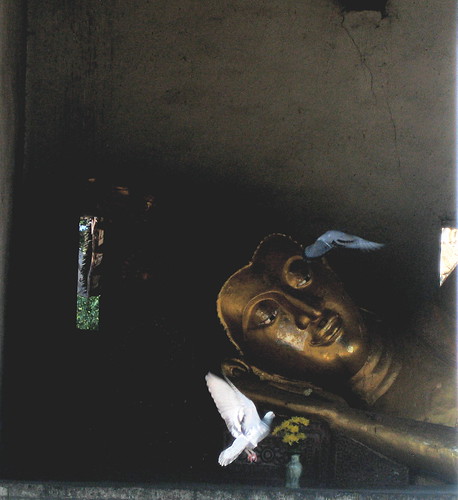Bangkok was my first experience in Southeast Asia, but I didn’t really get to experience the city properly until I returned after visiting Laos and Vietnam, so I’ll talk about it later. Suffice to say, it was hot and noisy and crowded and polluted and I ended up liking it a whole lot.
I recovered from my cross-Pacific jet lag just enough to meet up with my friend, bodyguard and travelling companion Janelle, who flew in from Australia to join me. We took the night train north — my first experience in a Thailand sleeper berth (mmmm… roomy!) — and woke up in Chiang Mai.
 Thai Rail sleeper berths. Cozy.
Thai Rail sleeper berths. Cozy.
The name of Chiang Mai translates as ‘new city’, since it wasn’t founded until 1296. You might think that after a few centuries, a name change would be in order — Bangkok, for instance, is a good half-millennium younger — but in Thailand, once people are comfortable with something, they don’t stress out about changing it. A major temple in Chiang Mai collapsed in an earthquake in 16th century and nobody got around to fixing it up until the 1990s. That seems to be the general pace of change in northern Thailand.
Chiang Mai is actually a very pleasant city. The old city is still surrounded by the original city moat and parts of the original walls. One corner of the old city has become the traveller district, with your typical range of backpacker guesthouses and a couple of hotels, plus restaurants, laundry places (wash, dry, fold for $2/kg), your pirate- and goth-themed internet cafes (yes!), etc. But while the city is very visitor-friendly and has lots of attractions, that’s just one small part of the city as far as anyone living there is concerned, and you can sit in a third-floor coffee-shop or restaurant on the town’s main square and watch the everyday Chiang Mai foot, car and moped traffic go by in front of a 10-meter poster of the king while Thai pop blares from the city gates. At dusk, hundreds of little birds fly out from their hiding places and swoop over the old city (eating mosquitos?), and you can dine at one of the incredibly delicious and picturesque restaurants that thrive on every single block — five bucks for a beer and the most delicious Thai curry you’ve ever tasted. Then you can hit the huge, sprawling Night Market, which mixes clothes and handicrafts from the local hill tribes with low-quality brand-name knock-offs. Lots of low-quality brand-name knock-offs. I’m not sure I quite get the appeal, but clearly there is a thirst for ill-fitting ‘Diesle’ tee-shirts that has yet to be slaked.
There are also a number of famous old temples in the city. Famous old temples (or wat) are everywhere in Thailand (and Laos). But while they’re always cool and inarguably photogenic, I’m a backwards, uncultured philistine and ended up spending less and less time checking them out as my journey across Asia went on. However, Wat Chedi Luang was the first one I visited for a serious length of time, and, to be honest, probably my favorite, since it’s all old and ruiny. Plus, it was across the street from our guesthouse. So I took lots of pictures.

